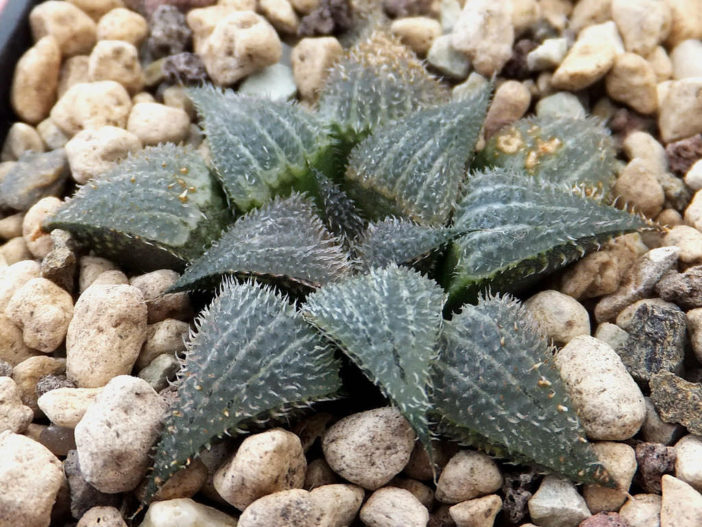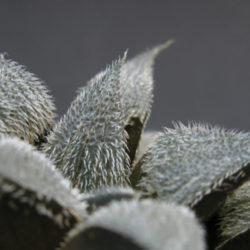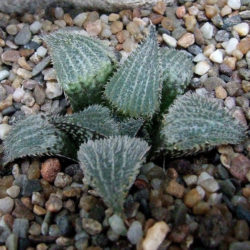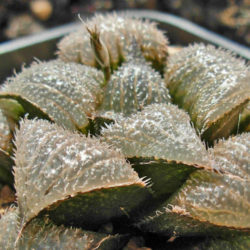Scientific Name
Haworthia mirabilis var. pilosa
Synonyms
Haworthia mirabilis 'Bobii', Haworthia 'Bobii', Haworthia bobii
Scientific Classification
Family: Asphodelaceae
Subfamily: Asphodeloideae
Tribe: Aloeae
Genus: Haworthia
Description
Haworthia mirabilis var. pilosa is a small succulent with attractive short hairs on the top of the leaves, which is a quite unique feature in the "mirabilis" group of Haworthias. The rosette remains solitary and has only 4 to 6 leaves in nature. Its size is up to 1.6 inches (4 cm) in diameter and grows buried in the ground.

Hardiness
USDA hardiness zone 10a to 11b: from 30 °F (−1.1 °C) to 50 °F (+10 °C).
How to Grow and Care
Haworthias are not considered difficult houseplants to grow. If you can keep a pot of Aloe alive on a windowsill, chances are you can do the same with a dish of Haworthia. As with all succulents, the most dangerous situation is too much water. They should never be allowed to sit in water under any circumstances. At the same time, these little decorative plants can be grown in interesting containers such as teacups and even miniature baby shoes. If you're given a Haworthia in such a container, make sure the container had adequate drainage. If it doesn't, it might be a good idea to pop the plant out of its container and add a layer of gravel to the bottom to reduce the wicking action of the soil above. Finally, look out for sunburned spots on your plants.
Haworthias are small, usually between 3 and 5 inches (7.5 cm and 12.5 cm) in height, and relatively slow-growing. Therefore, they are often grown in small clusters in wide, shallow dishes. Over time, clusters will naturally enlarge as the mother plant sends off small plantlets.
See more at How to Grow and Care for Haworthia.
Origin
Haworthia mirabilis var. pilosa is native to South Africa.
Links
- Back to genus Haworthia
- Succupedia: Browse succulents by Scientific Name, Common Name, Genus, Family, USDA Hardiness Zone, Origin, or cacti by Genus


